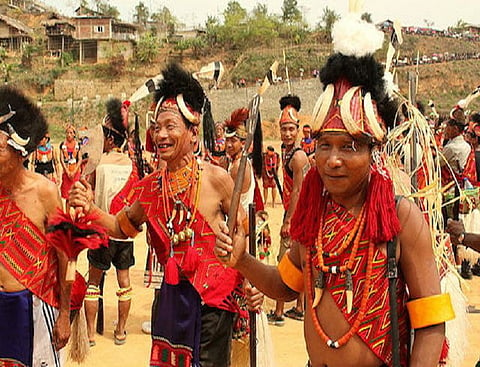
- Home
- Live Blog
- Breaking News
- Top Headlines
- Cities
- NE News
- Sentinel Media
- Sports
- Education
- Jobs

Ranjan K Baruah
(Feedback may be sent to bkranjan@gmail.com)
(Indigenous People’s Day today)
The word indigenous is common where there are different ethnic communities or different tribes or communities. Though we may not find out the exact meaning of indigenous but there is some available definition. The issue related to indigenous people has become important in United Nations too. Indigenous peoples, also known as first peoples, aboriginal peoples or native peoples, are ethnic groups who are the original inhabitants of a given region, in contrast to groups that have settled, occupied or colonized the area more recently. Groups are usually described as indigenous when they maintain traditions or other aspects of an early culture that is associated with a given region.
Indigenous peoples are inheritors and practitioners of unique cultures and ways of relating to people and the environment. They retain social, cultural, economic and political characteristics that are distinct from those of the dominant societies in which they live. Despite their cultural differences, indigenous peoples from around the world share common problems related to the protection of their rights as distinct peoples. There are an estimated 370 million indigenous people in the world, living across 90 countries. They make up less than 5 per cent of the world’s population, but account for 15 per cent of the poorest. They speak an overwhelming majority of the world’s estimated 7,000 languages and represent 5,000 different cultures.
Due to many business development projects and other business pressures indigenous people faces challenges as they loss of their lands, territories and resources. They do not have other choice and hence they migrate to urban areas in search of better prospects of life, education and employment. They also migrate between countries to escape conflict, persecution and climate change impacts. Additionally, indigenous migrants face a myriad of challenges, including lack of access to public services and additional layers of discrimination.
By resolution 49/214 of 23 December 1994, the United Nations General Assembly decided that the International Day of the World’s Indigenous Peoples shall be observed on 9 August every year. The date marks the day of the first meeting, in 1982, of the UN Working Group on Indigenous Populations of the Sub-Commission on the Promotion and Protection of Human Rights.
Theme for this year is “Indigenous people’s migration and movement” and it focuses on the current situation of indigenous territories, the root causes of migration, trans-border movement and displacement, with a specific focus on indigenous peoples living in urban areas and across international borders. The observance will explore the challenges and ways forward to revitalize indigenous people’s identities and encourage the protection of their rights in or outside their traditional territories.
There is no shadow of doubt that indigenous peoples are arguably among the most disadvantaged and vulnerable groups of people in the world. The international community now recognizes that special measures are required to protect their rights and maintain their distinct cultures and way of life. Though they have many contributions in preserving the nature and resources yet they do not get much benefit from it. They use least resources and always contribute towards combating climate change by their way of life. The rights of the indigenous peoples are also human rights and those rights must be up held. As migration is taking place, so, we must make sure that they are not discriminated or abused whenever they come to city or metros for jobs and better opportunities. (With direct inputs from UN publication)